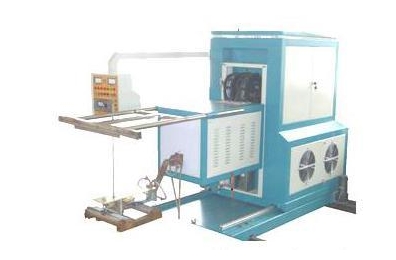- 23
- Dec
Rangkaian pelindapkejutan gigi peralatan pemanasan frekuensi tinggi
Tooth quenching range of peralatan pemanasan frekuensi tinggi
Keadaan perkhidmatan rawatan haba dan keperluan prestasi skru bebola: Skru ialah bahagian penghantaran utama pada pelbagai alatan mesin. Ia adalah komponen berfungsi penghantaran dan kedudukan yang menukarkan gerakan berputar kepada gerakan linear atau menukarkan gerakan linear kepada gerakan berputar. Terdapat dua kategori utama skru alat mesin: skru trapezoid dan skru bola. Antaranya, skru bola mempunyai kecekapan penghantaran yang tinggi, tindakan sensitif, suapan seragam dan stabil, tiada rayapan pada kelajuan rendah, ketepatan kedudukan tinggi dan kebolehulangan, dan hayat perkhidmatan yang panjang. Ia digunakan secara meluas dalam alat mesin CNC dan pusat pemesinan.
Skru bola sering mengalami lenturan, kilasan, keletihan dan hentaman apabila bekerja, dan pada masa yang sama menanggung geseran pada bahagian gelongsor dan berputar. Bentuk utama kerosakan pada skru bola adalah haus dan keletihan. Oleh itu, keperluan prestasinya ialah keseluruhannya mesti mempunyai sifat mekanikal komprehensif yang baik (iaitu gabungan kekuatan dan keliatan tertentu) dan kestabilan dimensi tinggi, dan bahagian kerja yang berkaitan (laluan perlumbaan, diameter aci) mesti mempunyai kekerasan tinggi, kekuatan tinggi. dan mencukupi Rintangan lelasan.
Quenching process description of ball screw thread:
First put the workpiece into the inductor (coil), when a certain frequency of alternating current is passed through the inductor, an alternating magnetic field will be generated around it. The electromagnetic induction of the alternating magnetic field produces a closed induced current in the workpiece ─ eddy current. The distribution of the induced current on the cross-section of the workpiece is very uneven, and the current density on the surface of the workpiece is very high and gradually decreases inward. This phenomenon is called the skin effect. The electric energy of the high-density current on the surface of the workpiece is converted into heat energy, so that the temperature of the surface is increased, that is, surface heating is realized. The higher the current frequency, the greater the current density difference between the surface and the interior of the workpiece, and the thinner the heating layer. After the temperature of the heating layer exceeds the critical point temperature of the steel, it is rapidly cooled to achieve surface quenching and heat treatment processes.

